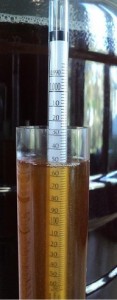 Some of the health risks present in the brewing and distilling industries are common to the food and drink sector generally, but some are also unique.
Some of the health risks present in the brewing and distilling industries are common to the food and drink sector generally, but some are also unique.
At the start of the process, gain dust at intake and initial processing can pose a risk to health, as it is a respiratory sensitiser. (This is obviously especially so in the case of grain storage and drying facilities)
Gases and vapours involved in the brewing process are another hazard to be controlled – ethanol itself has to be at a very significant airborne concentration to cause a serious health risk – concentrations at which the danger from explosions probably becomes more acute, but other gases, particularly CO2, a by-product of the fermentation process can be present. CO2’s asphyxiant properties are well known – though not as many are aware that chronic exposure to moderate levels far below what is conventionally considered dangerous can have an effect on physiology and health in general.
Of course breweries and distilleries are both enthusiastic users of CIP processes, with the usual caustic and acidic chemical risks.
Noise, very warm working environments, ergonomic issues and the usual industrial risks are also present.
- Atmospheric sampling
- Grain dust exposure assessment
- Evaluation of hazards from chemicals and gases.
- Thermal environment surveys
- Ergonomic assessments for repetitive tasks
Useful Resources and Links:
- EPA guidance note on BAT for the brewing and Distilling Industries
- Australian App – Health and Safety Checklist for Alcoholic Drinks Industry
- Great page on the deliberate contamination of ethanol with methanol during prohibition, and the harm that resulted

